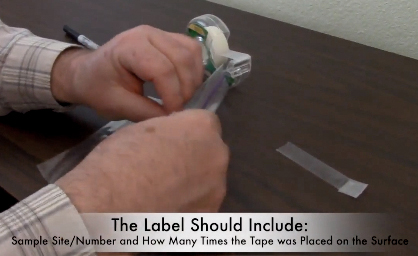
Sampling methods and how one collects the sample can come in many different forms. Everyone agrees that in order to sample the air quality in an environment it is necessary to take samples over a long time or repeated short-term samples over a substantial period of time. The time interval should include all cyclic events in the workspace and, ideally, have a temporal resolution sufficient to identify events that may result in discomfort. That can be done for gases (including water vapor as RH) and temperature. It is much more difficult for particles. It is assumed that small particles are the only ones that are collected by the respiratory system so we can sample particles that behave almost like gases. That assumption is wrong but it is “almost right”. Can clients afford the proper air sampling protocol? No!! So what do we do? We take one air sample, or maybe 20 while we are there. Each one represents a brief interval of time that may have nothing to do with the exposure that caused the problem. If there is not a CO2, O3, RH, or temperature problem we assume things must be OK. VOC, formaldehyde, or mold spores may be a problem.
Particles other than mold are not considered because the standard air sampling devices do not efficiently collect particles that are known to cause problems. As a result, the main cause of the “sick building syndrome” (SBS) or “Building Related Illness” (BRI) has gone unidentified “Officially”, just like the cause of Cholera in London. The fact that the symptoms of SBS or BRI coincide with the symptoms caused by glass fiber is not a mistake. The presence of glass fiber on surfaces correlates well with the occurrence of these complaints, as documented in numerous studies here and in Europe.
The larger question still remains. Do you want to test the air quality or do you want to determine if the environment will have a detrimental effect on individuals exposed to it? The air needs to be tested and needs to be within certain tolerances for optimal performance of the workers in that environment. If there are still health complaints it is probably not the air that is the problem. Surfaces must be tested.
Sampling Methods Procedures
Contact | Privacy | Terms of Use
Copyright © 1978-2022 Microlab Northwest™/MicrolabNW™ All Rights Reserved.
All Information and images contained within may not be copied or reproduced without written permission of MicrolabNW. Some information contained herein has been obtained from sources deemed reliable but not guaranteed.
